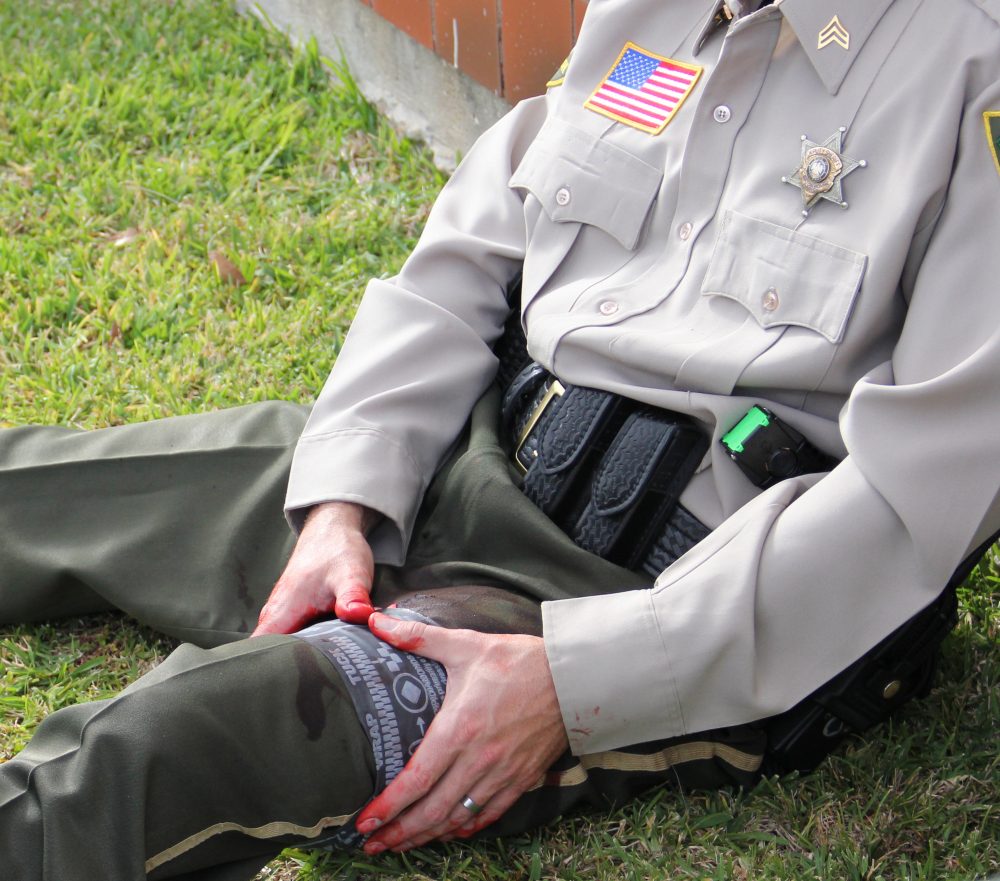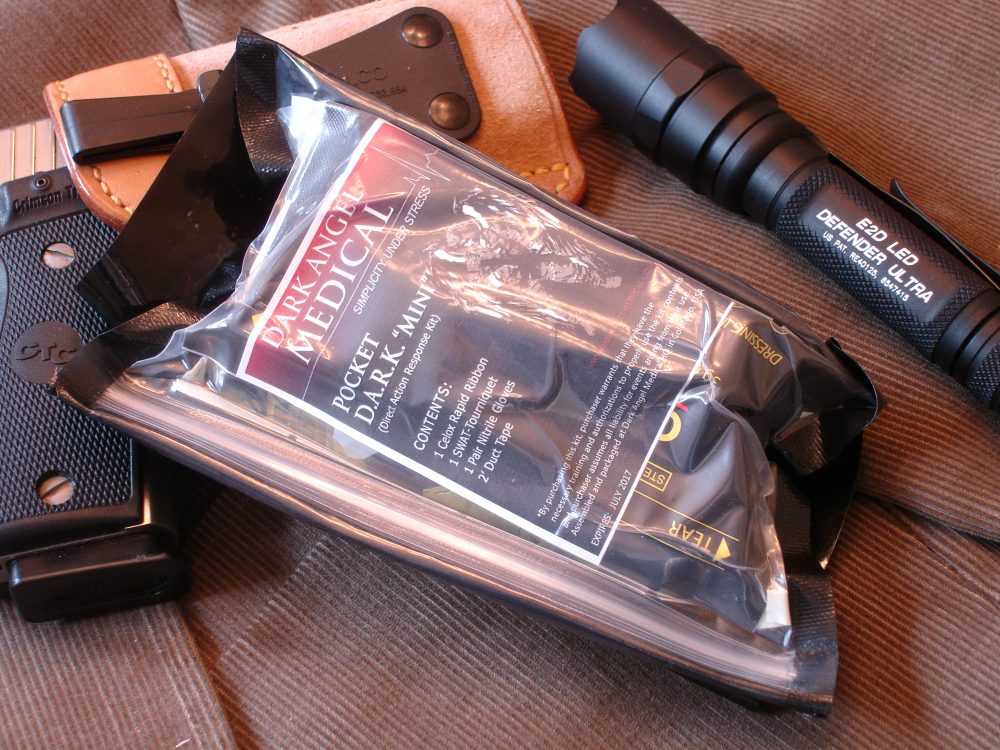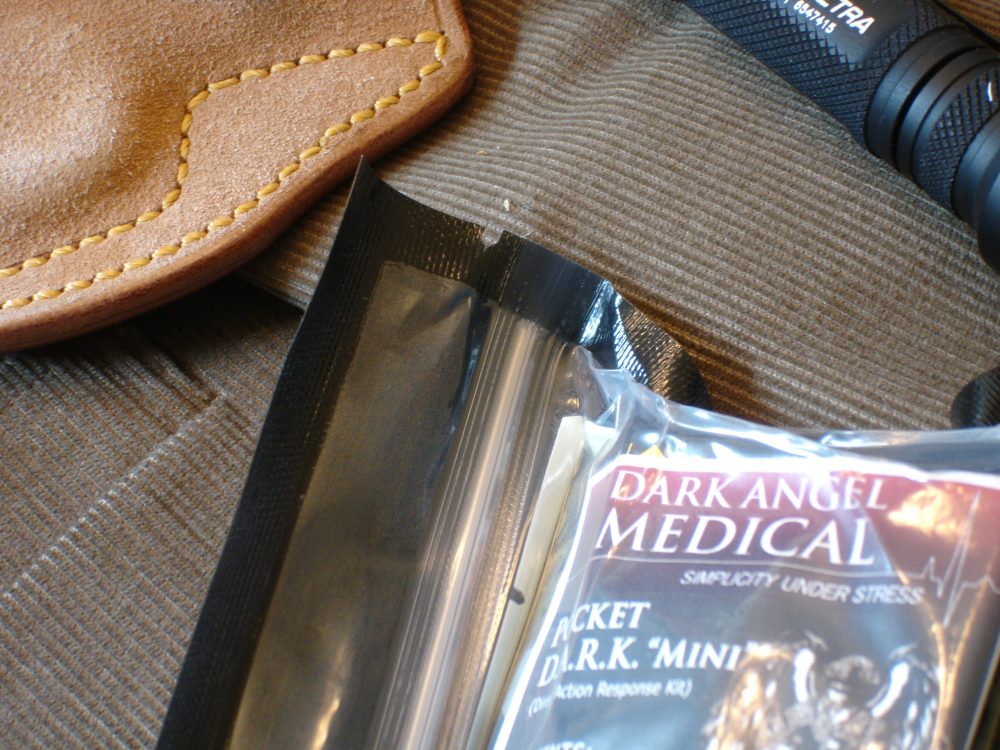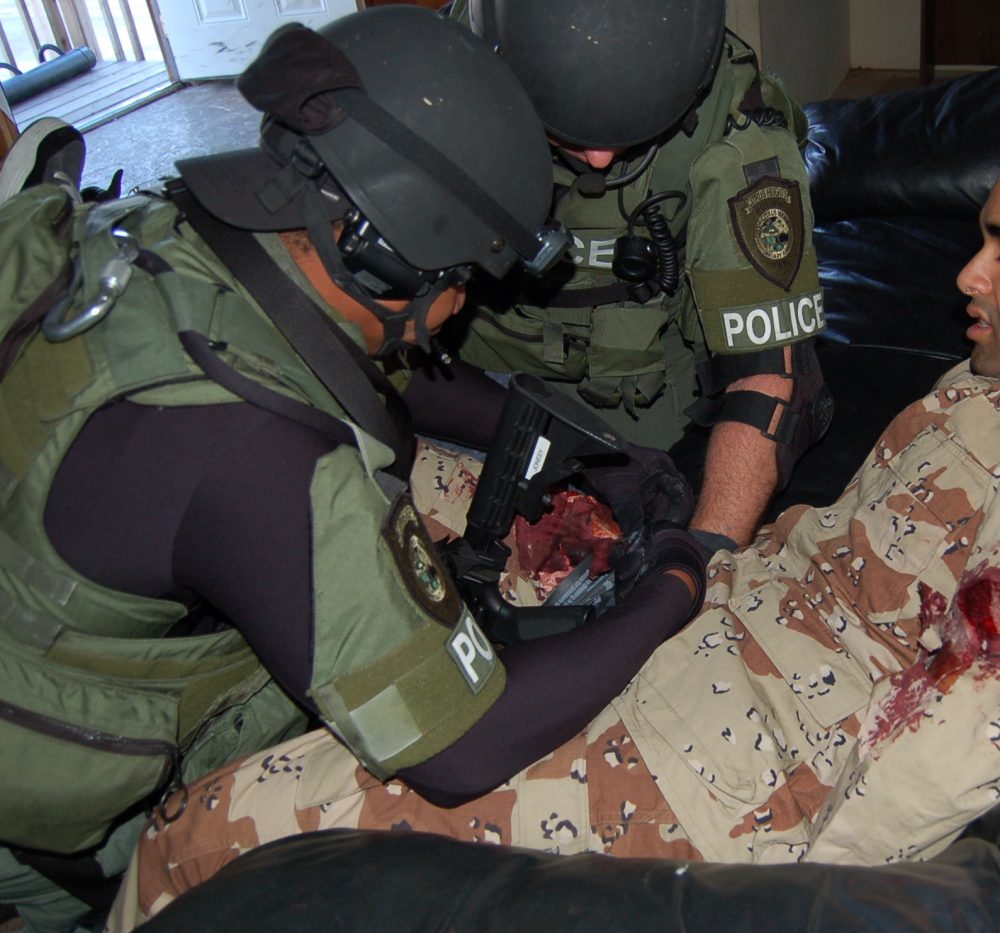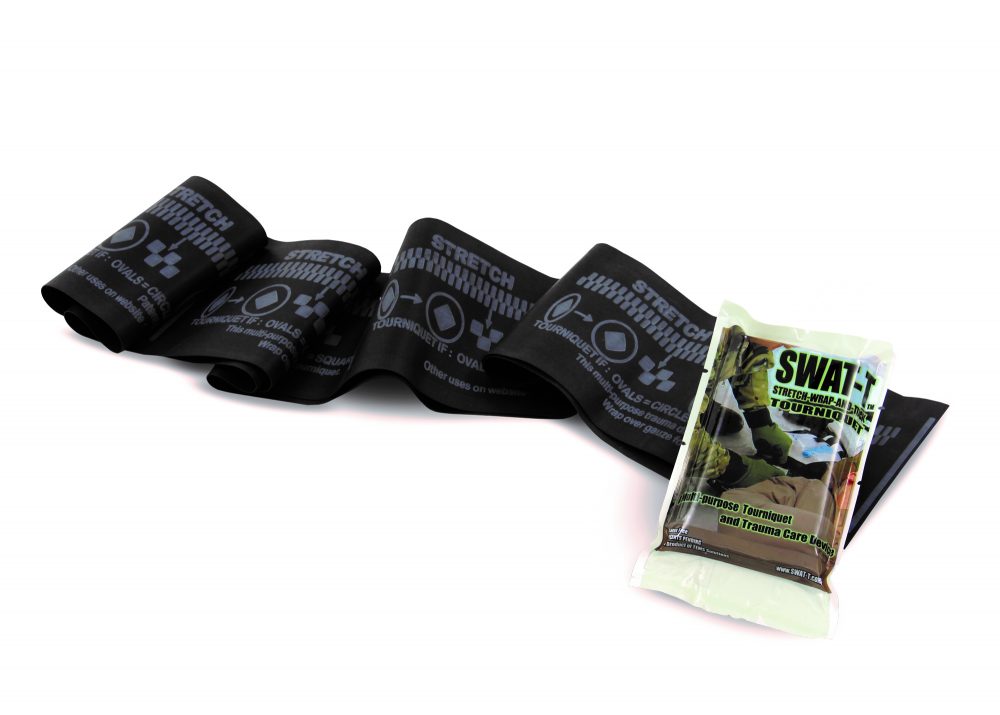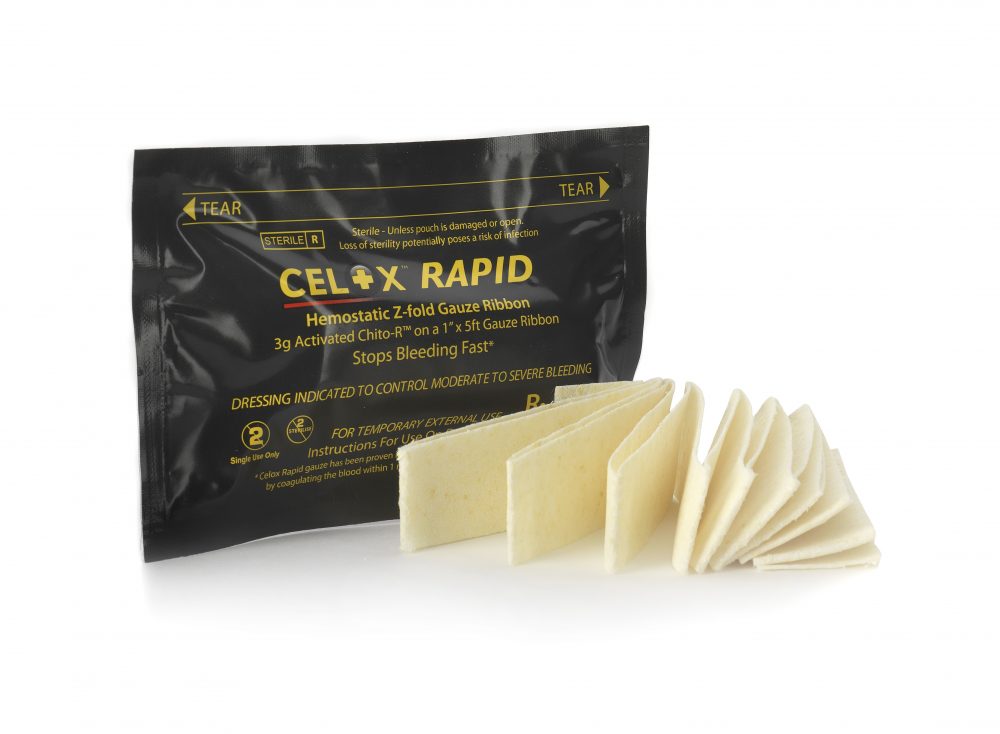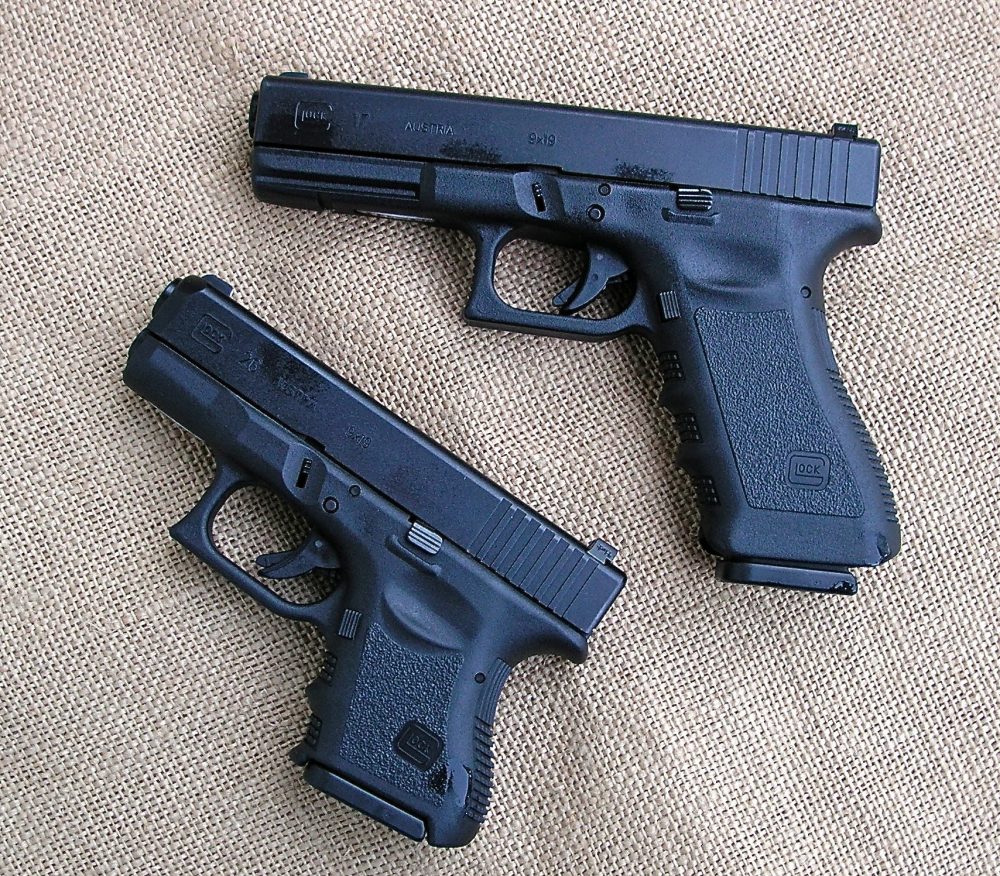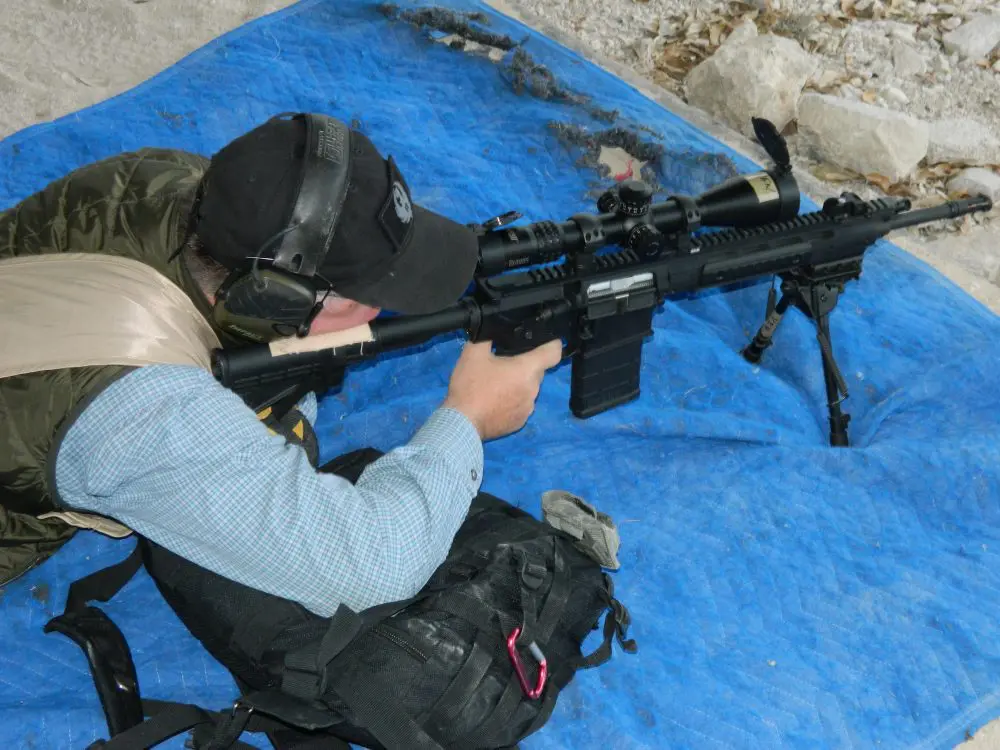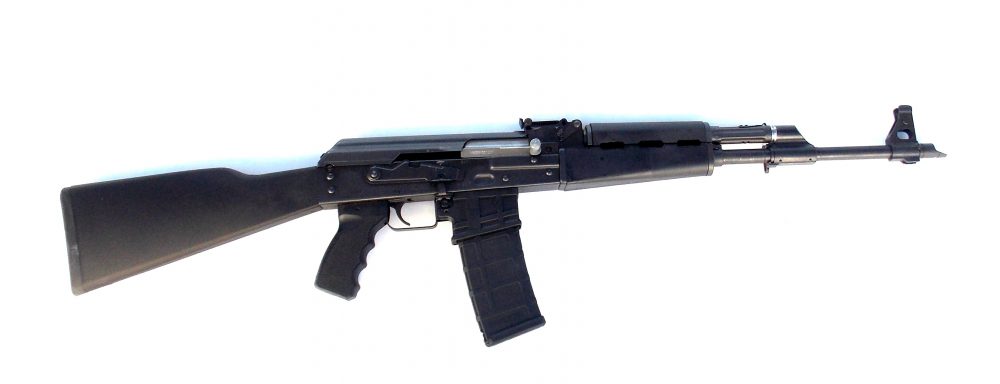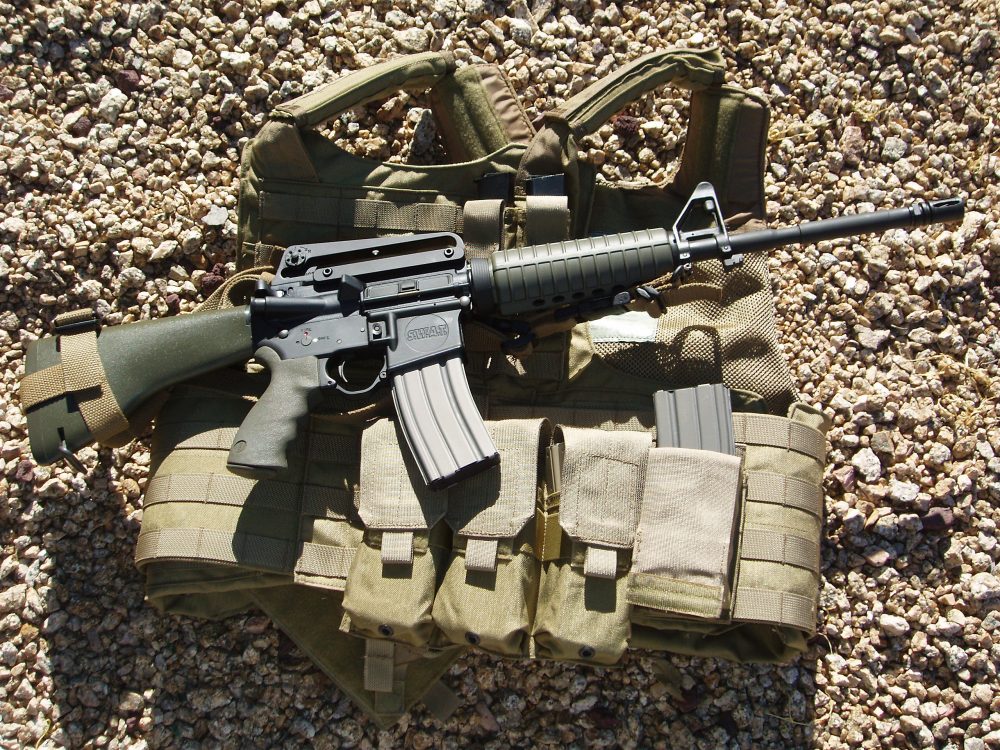You have your CCW and train with your firearm to prepare for the unexpected, but are you truly prepared? Knowing emergency medical skills and having a trauma kit with you are essential to increase your survivability and that of those around you in a grave situation.
In a “time is life” situation, seconds count. You need a simple, well-thought-out, easy-to-carry, and easy-to-deploy trauma kit. The Pocket D.A.R.K. “Mini” from Dark Angel Medical meets those criteria.
The “Mini” takes the Dark Angel “Simplicity Under Stress™” minimalist med kit approach to an even smaller level, as it measures 4″Hx2.5″Wx1″D and weighs only 4.8 ounces. It’s an ideal kit for everyday carry or plainclothes duty. Designed for situations where you don’t have room for a larger kit, it has everything you need to “Stop the Bleeding and Start the Breathing.” While great for pocket carry, the kit also fits into numerous cell phone pouches, the Blue Force Gear Ten Speed Single M4 mag pouch, and the HSGI Taco Single M4 Mag pouch.
Pocket D.A.R.K. “Mini” packs a lot of life-saving capability into a small package. Pistol is Kahr K9 Elite with CTC Lasergriips and SureFire E2D LED Defender Ultra flashlight. Holster is Galco UDC (Ultra Deep Cover).
The Pocket D.A.R.K. “Mini” comes in a resealable tear-open vacuum-sealed three-mil thick bag and includes a TEMS Solutions SWAT-Tourniquet™ (SWAT-T™); Celox® RAPID Ribbon hemostatic gauze; one pair of nitrile, latex-free gloves for protection from bodily fluids; and a two-foot length of duct tape. Nitrile gloves are more resistant to puncture and chemicals than latex gloves and do not cause the allergic reactions latex may.
Duct tape is multi-use. It can be utilized along with the vacuum bag to make an expedient occlusive dressing.
Although much dogma relating to tourniquet use persists, tourniquets have re-emerged in Tactical Emergency Medical Support (TEMS) as the standard of care in the tactical environment due to their ease of use, rapid application, and stoppage of blood loss.
Instead of viewing the tourniquet as a last resort, as has been the case in the past with civilian Emergency Medical Services (EMS) and emergency room physicians, the new Tactical Combat Casualty Care (TCCC) protocol considers the military tourniquet as an initial lifesaving intervention to control massive hemorrhage from an extremity.
TCCC guidelines differ from the Advanced Trauma Life Support (ATLS) guidelines on which civilian trauma care has been based in most countries. In the ATLS model, injuries are diagnosed and treated in accordance with the ABCDE sequence: Airway, Breathing, Circulation, Disability, Environment and Exposure. In the TCCC model, injuries are diagnosed and treated in accordance with the MARCH sequence: Massive hemorrhage, Airway, Respiration, Circulation, Head injury.
Pocket D.A.R.K. “Mini” comes in tear-open vacuum-sealed bag that is resealable after opening.
While recognizing that civilian law enforcement operations differ from military combat operations, the National Tactical Officers Association (NTOA) believes that “TCCC should serve as a foundation for TEMS protocols, practices and procedures.”
TCCC has three goals: 1) treat the casualty, 2) prevent additional casualties, and 3) complete the mission. There are three phases to combat casualty care: 1) Care Under Fire, 2) Tactical Field Care, and 3) Combat Casualty Evacuation Care.
The TCCC Basic Plan for Care Under Fire is: 1) return fire and take cover, 2) direct or expect the wounded to remain engaged as a combatant, 3) direct the wounded to move to cover and apply self-aid, 4) try to keep the wounded from sustaining additional wounds, and 5) airway management should be delayed until the Tactical Field Care phase. Finally, 6) stop life-threatening external hemorrhage if tactically feasible by directing the wounded to control hemorrhage by self-aid, use a tourniquet for hemorrhage that is anatomically amenable to tourniquet application, apply the tourniquet above the wound high on the extremity over the uniform, and tighten to stop arterial bleeding or until pulse is lost. Move the wounded to cover.
Many personal security details carry Pocket D.A.R.K. “Mini.” Ultra-compact size makes it ideal for plainclothes assignments or everyday carry. Photo: U.S. Army
The Committee on Tactical Combat Casualty Care (CoTCCC) guidelines for bleeding are: Assess for unrecognized hemorrhage and control all sources of bleeding. If not already done, use a tourniquet to control life-threatening external hemorrhage that is anatomically amenable to tourniquet application or for any traumatic amputation. Apply directly to the skin two to three inches above the wound.
For compressible hemorrhage not amenable to tourniquet use or as an adjunct to tourniquet removal (if evacuation time is anticipated to be longer than two hours), apply hemostatic gauze with at least three minutes of direct pressure. Reassess prior to tourniquet application.
Expose the wound and determine if the tourniquet is needed. If so, move the tourniquet from over the uniform and apply it directly to the skin two to three inches above the wound. If a tourniquet is not needed, use other techniques to control bleeding.
However, keep in mind that severed arteries tend to retract, so the “High and Tight” mantra could be beneficial in tourniquet placement as it is much easier to occlude one artery against one long bone (the humerus in the upper arm or the femur in the upper leg) versus attempting occlusion of two arteries against two bones (the radius and ulna in the lower arm or the tibia and fibula in the lower leg), and going as high as possible on either extremity will increase the chances of stopping the bleeding.
Sacramento, California area TEMS training with SWAT-T. Photo: TEMS Solutions
When time and the tactical situation permit, check the pulse. If a pulse is still present, consider additional tightening of the tourniquet or the use of a second tourniquet, side-by-side and proximal to the first, to eliminate the pulse. Expose and clearly mark all tourniquet sites with the time of tourniquet application using an indelible marker.
The SWAT-T (Stretch, Wrap And Tuck) was developed by a former Operator/Medic with 14 years’ experience in Operational Medicine, and is marketed and distributed by TEMS Solutions, LLC and its affiliates. Of stretch-retention design, the SWAT-T is exceptionally versatile. It can be employed as a tourniquet, pressure wrap bandage, or even an expedient sling or rib binding. The SWAT-T comes with a hospital-type wristband printed with areas for writing things like “BP,” “pulse,” or “time.” It is NTOA Member Tested and Recommended.
In testing conducted by noted trauma surgeon Sydney Vail, MD (who also serves as a tactical medical instructor at the International School of Tactical Medicine), the SWAT-T proved 100% effective in stopping arterial blood flow. It’s lightweight, easy to apply, and reusable. It has been applied 5,000 times, used in the sub-zero temps of Antarctica, and boiled in water with no strength degradation. Numerous additional studies and field and case reports back up the efficacy of the SWAT-T.
SWAT-T is easily and quickly applied as a tourniquet or pressure bandage. The life you save may be your own. Photo: TEMS Solutions
Tourniquets are liberally applied to extremity injuries on the battlefield. In one recent Journal of Special Operations Medicine (JSOM) study, 17% were arterial and 83% were venous tourniquets, which were exclusively windlass tourniquets. As reported in JSOM, when ongoing bleeding or distal pulses were found, medics tightened tourniquets under surgeon supervision until distal pulses stopped. The medics were generally surprised at how tight a tourniquet must be to stop arterial flow and convert a venous tourniquet into an arterial tourniquet.
Nerve injuries can result from tourniquet pressure, and higher pressures contribute significantly to more pain to the casualty. According to the latest Military Medicine tourniquet study, the wider (10.4cm) SWAT-T has lower occlusion and completion pressures than narrower tourniquets, such as the CAT, reducing the likelihood of nerve injury and reducing the associated discomfort. The SWAT-T was found to be more effective and to operate at safer pressures than the CAT tourniquet.
A seven-month study done in Iraq in 2006 with over 400 tourniquet applications showed that the incidence of nerve damage was minimal (1.7%) and transient in nature. (Reference: http://www.ncbi.nlm.nih.gov/pubmed/18376170)
Celox is made of a patented proprietary composition that contains chitosan—a natural polymer extracted from shrimp shells and highly purified. The technology behind Celox was developed in Bainbridge Island, Washington by a research team put together by marine biologist Tim Evans. Celox products are marketed and distributed in the U.S. by Biostat, LLC.
SWAT-T (Stretch, Wrap And Tuck) is a versatile tourniquet that has proven highly effective in numerous studies. Photo: TEMS Solutions
The Celox Rapid Ribbon included in the Pocket D.A.R.K. “Mini” is designed for fast control of life-threatening compressible hemorrhages not amenable to a tourniquet. The one-inch wide by five-foot long length of Z-folded hemostatic gauze is perfect for narrow wound channels, such as bullet, blast fragment, and stab injuries.
Celox is a proven performer. In the latest study, which was initiated for a DoD recommendation for choice of a hemostatic gauze, five hemostatic gauzes were compared in a test of severe arterial hemorrhage. In this U.S. Navy study, Celox Gauze had a 90% survival rate compared to 60% for Combat Gauze™ and 70% for Chitogauze. It is the first compact-carry, minimal-compression-time gauze for narrow entry wounds. In the same study, Celox had the lowest total blood loss and highest overall hemostasis.
Celox Rapid Ribbon gauze is the first compact-carry, minimal-compression-time hemostatic gauze for narrow entry wounds. Photo: Biostat
One of the products in the study, Celox Trauma Gauze, is now discontinued. Celox Medical now markets only Celox Gauze and the new Celox Rapid Gauze due to their superior performance. Celox Gauze has been shown to work equally well when there is a problem with clotting, such as hypothermic bleeding found in severe trauma. As casualties lose blood, their body temperature drops and blood no longer clots normally.
Celox Gauze has been approved by the CoTCCC as a hemorrhage treatment, and has been evaluated and adopted as standard by several NATO military medical corps. Celox now has a substantial history of use on battlefields (with both conventional and special forces) and has repeatedly proven itself. Celox Rapid Ribbon brings all the benefits of Celox Gauze in a one-inch-wide strip.
The Pocket D.A.R.K. “Mini” may be purchased directly from Dark Angel Medical for $37.95. If you use one of Dark Angel’s kits in a life-threatening situation (official documentation required), they will send you a complete replacement kit, free of charge, and will even cover the shipping.
SOURCES:
Dark Angel Medical, LLC
(720) 836-7150
www.darkangelmedical.com
Biostat, LLC
(844) 246-7828
www.biostatllc.com
TEMS Solutions, LLC
(877) 931-6862
www.swat-t.com
